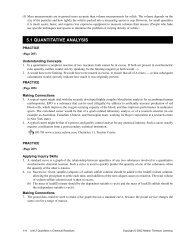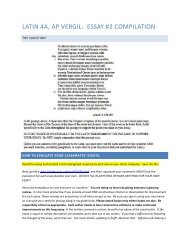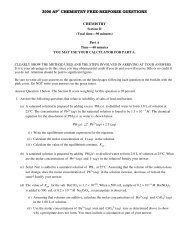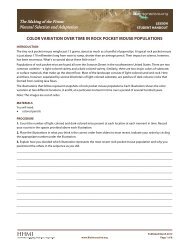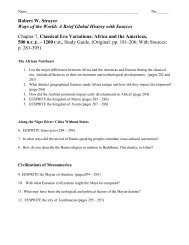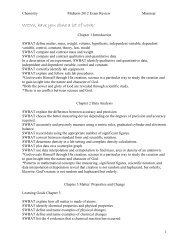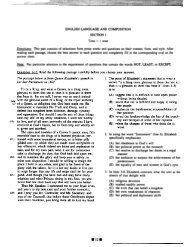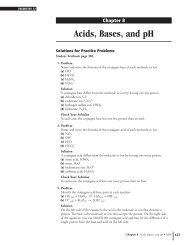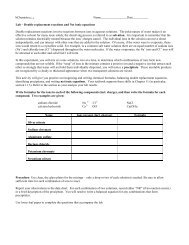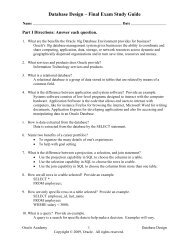Ch 16 Study Guide - Quia
Ch 16 Study Guide - Quia
Ch 16 Study Guide - Quia
Create successful ePaper yourself
Turn your PDF publications into a flip-book with our unique Google optimized e-Paper software.
MULTIPLE CHOICE:<br />
________1. The Protestant Reformation offered women<br />
(A) more alternatives to marriage than were offered by the medieval Catholic <strong>Ch</strong>urch.<br />
(B) generally more opportunities to play an official role within their churches.<br />
(C) more opportunity to use their education outside the home.<br />
(D) fewer female objects of veneration.<br />
________2. Which of the following is true of the Protestant Reformation?<br />
(A) It maintained its unity as it spread.<br />
(B) The invention of the printing press facilitated its spread.<br />
(C) The movement began in France.<br />
(D) It discouraged independent reading of the scriptures.<br />
________3. Which of the following groups had the greatest success in converting peoples to <strong>Ch</strong>ristianity?<br />
(A) Jesuit missionaries in <strong>Ch</strong>ina<br />
(B) Spanish Catholic missionaries in the Philippines<br />
(C) Puritan missionaries in New England<br />
(D) Portuguese missionaries in Africa<br />
________4. Which of the following was a major difference between Protestants and Catholics in<br />
European colonies?<br />
(A) Catholics generally built churches while Protestants never did.<br />
(B) Catholics were generally more intent on converting native peoples than Protestants.<br />
(C) Catholics were generally more opposed to slavery than Protestants.<br />
(D) Catholics were focused on getting rich while Protestants generally were not<br />
________5. How did Europeans commonly react to African slaves’ syncretic religions, such as<br />
Santeria and Voodoo?<br />
(A) They tolerated these religions.<br />
(B) They turned a blind eye to these religions.<br />
(C) They often participated in these religions.<br />
(D) They considered these religions to be satanic witchcraft and tried to suppress them.<br />
________6. The Wahhabi movement<br />
(A) began with a slave revolt in Brazil.<br />
(B) was a series of jihads in West Africa.<br />
(C) opposed religious blending or syncretism in Arabia.<br />
(D) supported the policies of religious tolerance enacted by Mughal emperor Akbar.<br />
________7.<br />
(A)<br />
(B)<br />
(C)<br />
(D)<br />
________ 8.<br />
(A)<br />
(B)<br />
(C)<br />
(D)<br />
________10.<br />
(A)<br />
(B)<br />
(C)<br />
(D)<br />
How might the Hindu practice of bhakti have threatened the social order in India?<br />
It sought to revive Hinduism.<br />
It set aside caste distinctions.<br />
It encouraged foot-washing.<br />
It emphasized the differences between Islam and Hinduism.<br />
Which of the following contributed most to the Scientific Revolution occurring in Europe rather than in <strong>Ch</strong>ina or the<br />
Islamic world?<br />
The relative independence of European universities<br />
The superior libraries of Western Europe<br />
Europe’s leadership in the fields of mathematics and medicine after 1000 C.E.<br />
The refusal of European scholars to separate the study of the natural order from that of philosophy and theology<br />
Which of the following best describes the adoption of modern European science in <strong>Ch</strong>ina, Japan, and the Ottoman<br />
Empire during the early modern era?<br />
All three societies adopted European advances in medicine.<br />
None of them showed any interest in European anatomical studies.<br />
All were primarily interested in European advances in theoretical science rather than in the practical applications of<br />
European scientific achievements.<br />
All were selective in their adoption of European science.




